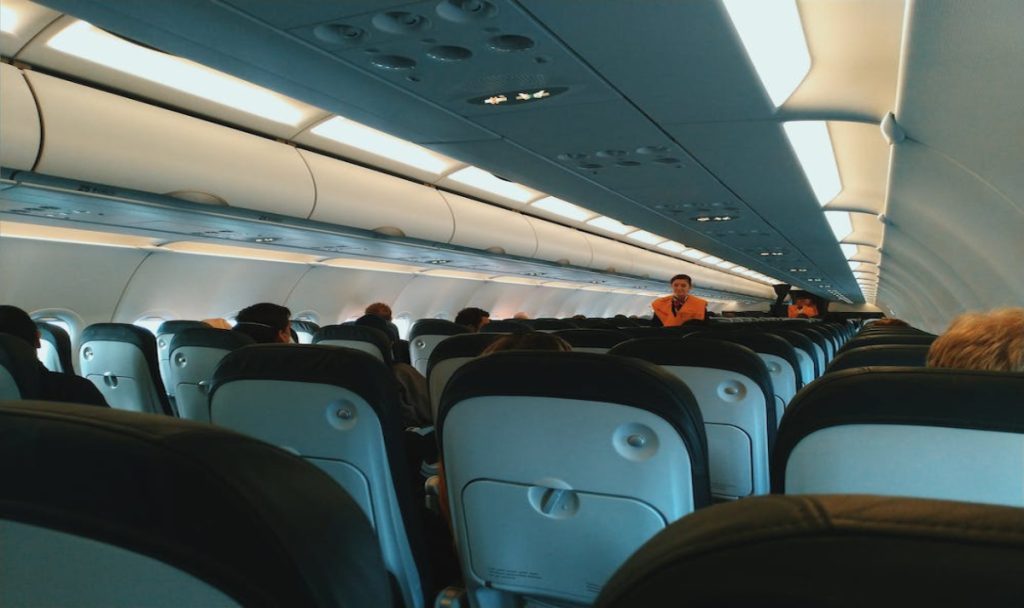You’re not alone if you’ve ever wondered why aeroplane cabin lights dim during takeoff and landing. Some passengers are not familiar with this practice and may find it disturbing.

But interestingly, dimming cabin lights during takeoff and landing isn’t merely a routine adjustment but a deliberate act by the airline crew.
One reason for this is to create a specific atmosphere on board. Dimming the lights helps passengers focus on important safety information the crew provides. It’s like setting the stage for an important performance.
Passenger safety is a top priority for airlines, and the dimming of lights plays a crucial role in achieving this. When the lights go down, it’s a signal for passengers to pay attention. The safety demonstration, like seat belts and emergency exit instructions, becomes more noticeable in the subdued lighting.
For example, the U.S. Federal Aviation Administration (FAA) enforces its exit requirements regarding the emergency exits. It requires that airplanes with 110 seats or more must have at least two really good emergency exits. Since most incidents happen during takeoff or landing, airlines must ensure passengers onboard can find these exits quickly.
In other words, by dimming the cabin lights, passengers can easily spot the bright signs during emergencies. Another reason for dimming the lights is related to the passengers’ eyes adjusting to the external environment. During takeoff and landing, especially in the dark, your eyes need time to adapt to the outside light.
By dimming the cabin lights, the crew helps your eyes get used to the surrounding darkness, making it easier to see outside and follow safety procedures. Depending on light exposure, it takes about 20 to 30 minutes for the eyes to adjust to darkness.
These few minutes can make a huge difference in emergencies, such as safely evacuating passengers from a plane. Like Patrick Smith, an airline pilot, echoed, “By pre-adjusting your eyes, you won’t be suddenly blinded while dashing for the doors in darkness or smoke.”
Also, when the cabin lights are too bright, it can be difficult for flight attendants to detect outside dangers. “It also makes it easier for the flight attendants to assess any exterior hazards, like fire or debris. With the lights burning brightly, the glare would make it impossible to see outside,” stated Patrick Smith.
Beyond safety considerations, dimming the lights also creates a calm and relaxed atmosphere during what can be perceived as critical times of the flight. It helps passengers stay calm and focused, contributing to a smoother experience during takeoff and landing.
The secret of dimming cabin lights during takeoff and landing is all about ensuring passenger safety, creating the right atmosphere, and aiding night vision. Additionally, flight crews are adequately trained to communicate effectively with passengers on these procedures to ensure a safe and smooth journey.
So, next time you find yourself in an airplane with dimmed lights, remember it’s not just about setting the mood; it’s a conscious effort to ensure your flight is safer and more comfortable.
